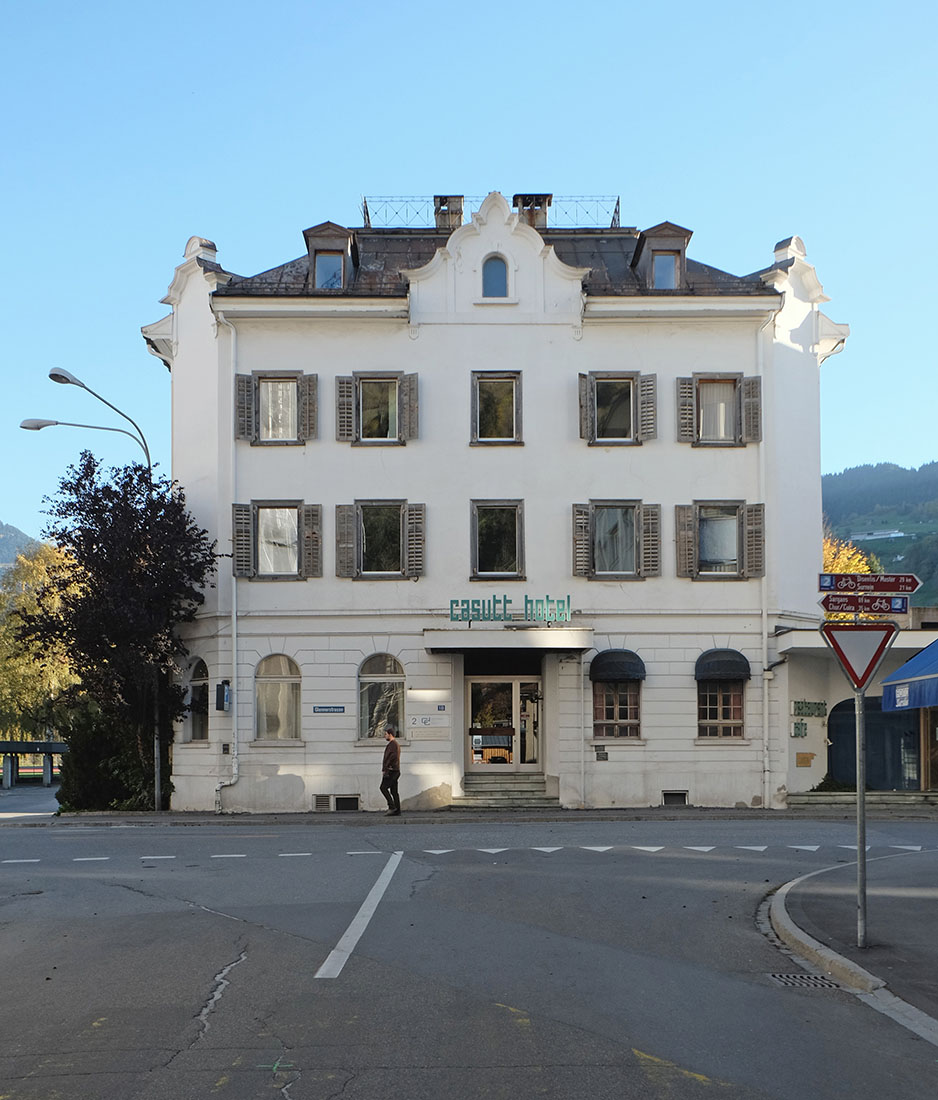 |
 |
 |
 |


Tini Casutt Hotel & Restaurant (Conversion)
Glennerstrasse 18, Ilanz
1989
The Hotel Casutt was built in 1903 when the Rhaetian Railway opened the Chur Illanz line. The building was constantly renovated and maintained by the Casutt family. The hotel has been owned by the Casutt family for over a hundred years and is now in its fifth generation. The traditional hotel was run by hoteliers Lisbeth and Tin Casutt for around 45 years, before being handed over to the aforementioned fifth generation (sons Christoph and Benno Casutt) in 2014. Since 2018 the hotel is run by the new tenants.
After Rudolf Olgiati was given the opportunity to convert a stable building behind the main building into hotel rooms and holiday apartments between 1983 and 1986, he was also called on to work on the hotel and restaurant in the main building in 1989. The intervention of the architect Rudolf Olgiati is particularly recognizable at the entrance to the restaurant with its basket arch and the glazed wall. On the backside, three massive, sculpted concrete pillars on a marble pedestal and a canopy mark the exit of the terrace.
Das Hotel Casutt wurde 1903 erbaut, als die Rhätische Bahn die Linie Chur Illanz eröffnet. Konstant wurde das Gebäude von der Familie Casutt renoviert und unterhalten. Bereits seit über hundert Jahren ist das Hotel im Besitz der Familie Casutt, inzwischen bereits in der fünften Generation. Das Traditionshotel war rund 45 Jahre lang durch das Hotelierpaar Lisbeth und Tin Casutt geführt worden, bevor es im Jahr 2014 an die erwähnte fünfte Generation (die Söhne Christoph und Benno Casutt) übergeben wurde. Seit 2018 wird das Hotel von den neuen Pächtern betrieben.
Nachdem Rudolf Olgiati in den Jahren 1983 bis 1986 ein Stallgebäude hinter dem Haupthaus zu Hotelzimmern und Ferienwohnungen umbauen konnte, wurde er 1989 auch für die Arbeiten am Hotel und Restaurant im Haupthaus beigezogen. Erkennbar ist der Eingriff des Architekten Rudolf Olgiati insbesondere am Restauranteingang mit seinem Korbbogen und der verglasten Wand. Auf der Rückseite markieren drei massive, plastisch geformte Betonsäulen auf einem Marmorpodest und ein Vordach den Ausgang der Gartenwirtschaft.